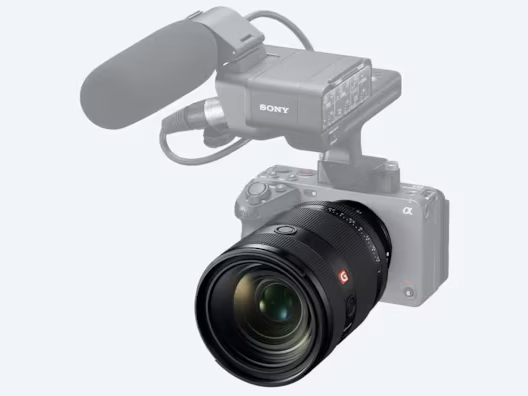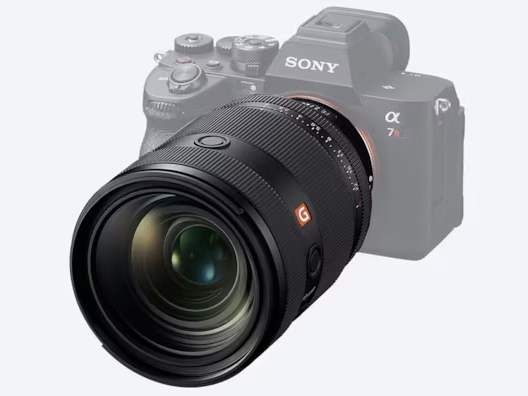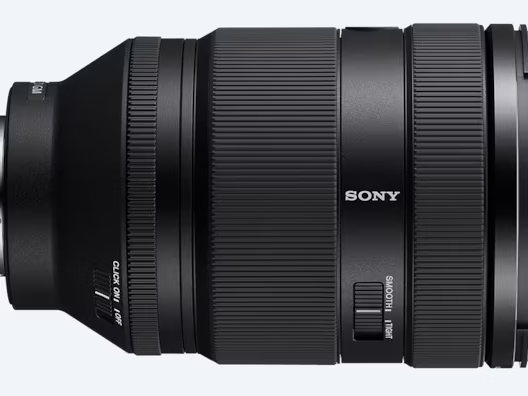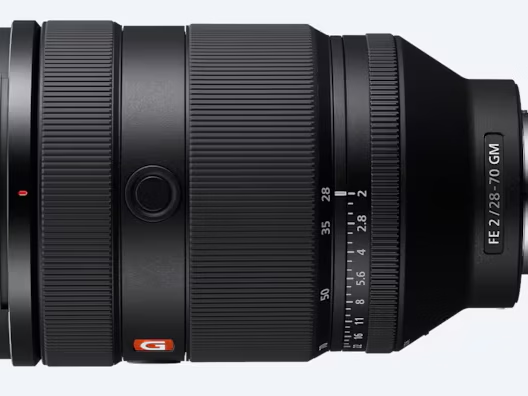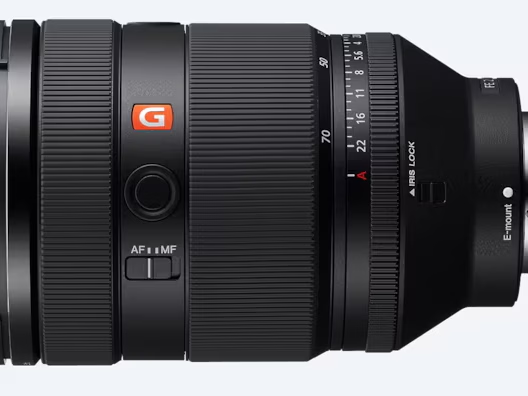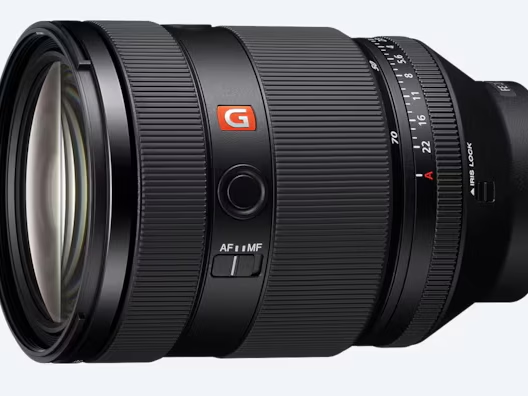ORDERED APRIL 2025
My favourite Sony lens was the original FE 24-70 GM F2.8 but it has reached the end of life so I had to decide between getting the new version or the 28-70 F2 and I am now awaiting delivery.
Analysis and Comparison: Sony FE 28-70mm F2 GM vs Sony FE 24-70mm F2.8 GM II
- Introduction: A New Benchmark in Standard Zooms?
Sony’s G Master (GM) lens line-up represents the pinnacle of its optical engineering, consistently pushing boundaries in resolution, bokeh quality, and autofocus performance. Within this prestigious family, the introduction of the Sony FE 28-70mm F2 GM marks a significant development – Sony’s first constant F2 aperture standard zoom lens for its full-frame E-mount system. This lens is positioned not merely as another high-quality zoom, but as a tool engineered to deliver performance characteristics often associated with prime lenses, packaged within the versatility of a zoom format. It targets demanding professional photographers and videographers, along with serious enthusiasts, who require exceptional low-light capability and depth-of-field control.
The FE 28-70mm F2 GM enters a niche but demanding market segment, directly challenging the established Canon RF 28-70mm F2 L USM, a lens that garnered significant attention upon its release. However, Sony’s approach is distinct, notably achieving a comparable specification while significantly reducing the size and, more dramatically, the weight compared to its Canon counterpart – a point Sony actively highlights.
This blog post provides a comprehensive analysis of the Sony FE 28-70mm F2 GM. It delves into a detailed comparison with its highly acclaimed sibling, the FE 24-70mm F2.8 GM II , synthesises findings from professional reviews to identify strengths and weaknesses , examines the factors contributing to its substantial price tag , and assesses the necessity of pairing it with Sony’s flagship camera bodies like the Alpha 1 II or Alpha 9 III.
The launch of this lens, closely followed by the announcement of the FE 50-150mm F2 GM , suggests a deliberate strategic direction from Sony. These ultra-fast zooms appear aimed at offering professionals, particularly those covering events, weddings, or portraits , a compelling alternative to carrying a bag full of fast prime lenses. This strategy attempts to redefine workflows by combining the aperture benefits of primes with the flexibility of zooms, targeting situations where speed and adaptability are paramount.
- The Contenders: Specifications and Core Attributes
Understanding the nuances between the FE 28-70mm F2 GM and the FE 24-70mm F2.8 GM II requires a close look at their respective specifications and design philosophies.
2.1 Sony FE 28-70mm F2 GM: The F2 Pioneer
This lens establishes a new category within Sony’s E-mount system. Its defining characteristic is the constant F2 maximum aperture throughout its 28mm to 70mm focal range, extending down to a minimum aperture of F22. As a G Master lens, it carries the expectation of Sony’s highest standards in optical resolution, bokeh aesthetics, autofocus speed, and overall build quality.
The optical construction is necessarily complex to achieve the F2 aperture while maintaining image quality. It comprises 20 elements arranged in 14 groups, incorporating a significant number of specialised glass types: three XA (extreme aspherical), three standard aspherical, three Super ED (extra-low dispersion), and one ED element. This sophisticated design aims to meticulously control various optical aberrations, including chromatic aberration and spherical aberration, ensuring high sharpness from corner to corner, even when shooting wide open at F2. Sony’s Nano AR Coating II is applied to minimise flare and ghosting, particularly in challenging backlit situations , while a fluorine coating on the front element helps repel water, oil, and contaminants.
Autofocus is driven by a powerful system employing four of Sony’s XD (extreme dynamic) Linear Motors. These motors work in conjunction with a floating focus mechanism, designed to deliver fast, precise, and near-silent autofocus performance. This system is engineered to keep pace with the high-speed continuous shooting capabilities of modern Sony bodies (up to 120fps compatibility mentioned) and demanding video applications. Focusing occurs internally, meaning the lens’s physical length does not change during focusing.
Handling is enhanced by a suite of professional controls. A dedicated aperture ring provides tactile control and can be de-clicked for smooth, silent iris adjustments during video recording, complete with an iris lock switch. Unique to this class of lens is a zoom smoothness switch, allowing adjustment between ‘Smooth’ and ‘Tight’ torque settings for the zoom ring. Two customisable focus hold buttons are provided for easy access in different orientations , and Linear Response MF ensures predictable manual focus adjustments.
Physically, the lens weighs 918 grams (approximately 2.02 lb or 32.4 oz) and measures 92.9mm in diameter by 139.8mm in length (approximately 3.7 x 5.5 inches). It utilises an 86mm front filter thread. While it employs an external zoom mechanism, the lens barrel extends by only about 18mm (0.7 inches) when zooming from 28mm to 70mm, minimising shifts in balance. The construction incorporates dust and moisture resistance for reliability in challenging environments.
The minimum focusing distance is a constant 0.38 metres (1.25 feet) throughout the zoom range, yielding a maximum magnification ratio of 0.23x at the 70mm setting. Bokeh quality is addressed by a newly designed 11-blade circular aperture diaphragm, intended to produce smooth, aesthetically pleasing background blur.
2.2 Sony FE 24-70mm F2.8 GM II: The Refined Workhorse
The FE 24-70mm F2.8 GM II represents the evolution of Sony’s professional standard zoom. As a “Mark II” iteration, it builds upon the success of the original GM version, incorporating significant improvements primarily focused on reducing size and weight while enhancing optical and autofocus performance. It covers the classic 24-70mm focal range with a constant F2.8 maximum aperture (minimum F22).
Its optical formula consists of 20 elements in 15 groups, also featuring advanced elements like XA, ED, and Super ED glass to ensure high resolution and effectively suppress aberrations. Nano AR Coating II is employed here as well to combat flare and ghosting.
Mirroring the F2 GM, the autofocus system relies on four XD Linear Motors and a floating focus mechanism. This ensures comparable high-speed, precise, and quiet AF capabilities, suitable for both demanding stills (compatibility up to 30fps mentioned) and video work.
Handling controls are very similar to the F2 GM, featuring a de-clickable aperture ring with lock, an adjustable zoom smoothness switch (Tight/Smooth), two customisable focus hold buttons, and an AF/MF switch.
The most striking difference lies in its physical dimensions. The F2.8 GM II is substantially lighter and more compact, weighing just 695 grams (approximately 1.5 lb or 24.5 oz) and measuring 87.8mm in diameter by 119.9mm in length (approximately 3.5 x 4.7 inches). This represents a weight reduction of over 20% and a volume reduction of around 18% compared to the original 24-70mm F2.8 GM. It uses a more common 82mm filter thread. However, unlike the F2 GM, its barrel extends considerably during zooming – approximately 33.3mm (1.31 inches) from 24mm to 70mm. Dust and moisture resistance are also integral to its design.
This lens offers superior close-focusing capabilities, with a minimum focus distance of just 0.21 metres (8.3 inches) at 24mm and 0.30 metres (11.8 inches) at 70mm. This results in a higher maximum magnification ratio of 0.32x. Like the F2 GM, it features an 11-blade rounded diaphragm for smooth bokeh rendering.
- Performance Showdown: F2 Aperture vs F2.8 Versatility
Comparing these two G Master lenses reveals a fundamental trade-off between the unique capabilities of the F2 aperture and the established versatility of the F2.8 standard zoom.
3.1 The Defining Trade-off: Light Gathering & DOF vs Wider View
The core distinction lies in the maximum aperture. The FE 28-70mm F2 GM’s F2 aperture gathers precisely twice the amount of light compared to the F2.8 aperture of the GM II model – a full one-stop advantage. This translates directly into practical benefits, particularly in low-light environments. Photographers can utilise lower ISO sensitivities for cleaner images, or employ faster shutter speeds to freeze motion, compared to what is possible at F2.8 under the same lighting conditions. Furthermore, the F2 aperture enables a significantly shallower depth of field, allowing for more pronounced subject isolation and background blur, mimicking the aesthetic often sought with fast prime lenses.
Conversely, the FE 24-70mm F2.8 GM II holds a distinct advantage at the wider end of the focal range, offering a 24mm perspective compared to the F2 GM’s 28mm starting point. While seemingly small, this 4mm difference provides a substantially wider field of view. This wider perspective is often crucial for landscape photography, architectural work, interior shots, and certain styles of event or street photography where capturing more of the scene is necessary.
This fundamental difference shapes the ideal use case for each lens. The choice extends beyond a simple technical specification (F2 vs F2.8) to influence creative potential and suitability for specific photographic disciplines. The F2 GM leans towards applications where subject separation and low-light performance are paramount, such as portraiture, weddings, and dimly lit events. In contrast, the F2.8 GM II, with its wider 24mm reach and more manageable size, remains the more flexible, all-purpose standard zoom, better suited for general professional use where versatility across various scenarios is key. The decision reflects a prioritisation between these distinct advantages.
3.2 Image Quality Analysis
Both lenses bear the G Master designation, signifying Sony’s commitment to exceptional image quality.
Sharpness: The FE 28-70mm F2 GM is marketed as delivering sharpness rivalling prime lenses, maintaining high resolution across the frame, even when used wide open at F2. Independent lab tests generally corroborate this, showing excellent to outstanding central sharpness throughout the zoom range at F2. Edge performance is also typically excellent, though some tests suggest a slight decrease in edge sharpness specifically at 70mm F2 compared to the centre, albeit often considered minor in real-world use. The FE 24-70mm F2.8 GM II is similarly lauded for its optical prowess, widely regarded as a significant improvement over its predecessor and highly competitive with prime lenses in terms of sharpness.
Bokeh: Both lenses utilise an 11-blade rounded aperture diaphragm designed to produce smooth, circular bokeh. Naturally, the F2 GM’s wider maximum aperture provides inherently greater potential for achieving shallow depth of field and significant background blur. However, a point of critique raised in some reviews concerns the potential for “onion ring” patterns within the bokeh balls of the F2 GM under specific conditions, despite the inclusion of XA elements intended to suppress such artefacts. The F2.8 GM II is also generally praised for its pleasing bokeh rendering.
Aberrations & Flare: Both lenses incorporate ED and Super ED glass elements to effectively minimise chromatic aberrations (colour fringing). Reviews indicate the F2 GM manages CA very effectively. Both employ Nano AR Coating II for robust flare and ghosting suppression , with the F2 GM noted for its high resistance. Geometric distortion is present in the F2 GM, exhibiting barrel distortion at 28mm and transitioning to pincushion distortion towards 70mm, though this is readily correctable via lens profiles. The F2.8 GM II exhibits similar correctable distortion patterns.
While both lenses achieve the high optical standards expected of the GM line, the ambitious goal of a constant F2 aperture in the 28-70mm GM might introduce subtle optical compromises compared to the more conventional, highly refined F2.8 design. The potential for occasional bokeh artefacts or the minor dip in edge sharpness at the extreme telephoto end wide open could be seen as consequences of pushing the optical envelope. The FE 24-70mm F2.8 GM II, benefiting from being a second-generation refinement of a standard F2.8 formula, may represent a more consistently flawless optical performance across all metrics, albeit without the headline F2 aperture. Achieving F2 in a zoom presents significant optical challenges , making minor trade-offs plausible.
3.3 Autofocus Capabilities
Both the FE 28-70mm F2 GM and the FE 24-70mm F2.8 GM II are equipped with Sony’s most advanced autofocus hardware: four XD Linear Motors driving floating focus groups. This configuration is engineered for top-tier autofocus performance – characterised by exceptional speed, high precision, quiet operation, and tenacious subject tracking, making both lenses suitable for demanding applications like sports photography, event coverage, and professional video production.
Both lenses are explicitly marketed as being compatible with the high frame rate shooting capabilities of advanced Sony Alpha bodies. The F2 GM is stated to support AF tracking up to 120fps on compatible cameras like the A9 III , while the F2.8 GM II is mentioned with compatibility up to 30fps, though likely capable of higher speeds depending on the camera body.
Professional reviews consistently affirm the excellent autofocus performance of both lenses. They are described as fast, accurate, silent, and reliable in tracking subjects.
Given that both lenses employ the same number and type of high-end autofocus motors and floating focus mechanisms , and are both marketed for high-speed compatibility , their autofocus capabilities appear largely equivalent based on specifications and review consensus. Any perceptible difference in real-world autofocus performance is likely to be minimal or more dependent on the specific camera body’s processing power and algorithms rather than an inherent advantage of one lens over the other. Therefore, the choice between these two lenses should likely not hinge significantly on anticipated differences in autofocus speed or accuracy.
3.4 Suitability for Videography
Both the F2 GM and F2.8 GM II are explicitly designed with hybrid shooters in mind, incorporating features beneficial for video production.
Shared key video features include the quiet operation of the XD Linear Motors, crucial for clean audio capture during autofocus ; the de-clickable aperture ring allowing for smooth, stepless iris adjustments ; and the Linear Response Manual Focus (MF) for consistent, repeatable focus pulls.
Focus breathing (the slight change in focal length when adjusting focus) is minimised in both designs. The F2 GM is particularly noted for its excellent control of focus breathing, potentially being parfocal (maintaining focus during zoom), and supports in-camera breathing compensation on compatible bodies. The F2.8 GM II also features reduced breathing and supports compensation.
Where the F2 GM gains a slight edge for certain video workflows is in its physical handling characteristics. Its minimal zoom extension (approx. 18mm or 0.7 inches) helps maintain the camera setup’s centre of gravity when mounted on a gimbal, offering better stability compared to the F2.8 GM II, which extends significantly more (approx. 33.3mm or 1.31 inches). Additionally, the F2 GM’s adjustable zoom smoothness switch could potentially aid videographers in achieving smoother, more controlled manual zoom movements. Naturally, the F2 aperture also provides greater creative latitude for controlling depth of field in cinematic productions.
While both lenses are highly competent tools for video, the FE 28-70mm F2 GM presents tangible advantages for videographers frequently using gimbals, performing manual zooms, or requiring the utmost control over shallow depth of field, stemming from its near-internal zoom behaviour, adjustable zoom torque, and wider maximum aperture.
3.5 Ergonomics: Size, Weight, and Handling
The difference in physical size and weight is one of the most significant practical distinctions between these two lenses. The FE 28-70mm F2 GM weighs 918g and is 139.8mm long , while the FE 24-70mm F2.8 GM II comes in at 695g and 119.9mm long. This makes the F2 GM approximately 32% heavier and noticeably longer, as well as wider (indicated by its larger 86mm filter thread compared to the F2.8 GM II’s 82mm).
It is important to contextualise the F2 GM’s dimensions. While undeniably large and heavy compared to standard F2.8 zooms , it is frequently described as relatively compact and lightweight specifically for an F2 standard zoom, particularly when compared against the Canon RF 28-70mm F2 which weighs a substantial 1430g. Some reviewers and users found the F2 GM’s weight manageable for handheld shooting, even over extended periods , attributing this partly to good balance with weight concentrated towards the rear. Others, however, perceived its bulk as prohibitive for regular use.
The FE 24-70mm F2.8 GM II, conversely, leverages its significantly reduced size and weight as a major selling point. Being roughly 18-22% smaller and lighter than its own predecessor , it offers substantially better portability and handling ease, making it less fatiguing to carry and use throughout a long shooting day.
The difference in filter thread size also has practical implications. The 86mm filters required for the F2 GM are less common and generally more expensive than the widely available 82mm filters used by the F2.8 GM II. This can add a considerable hidden cost for photographers who regularly use filters like polarisers, neutral density, or diffusion filters.
Ultimately, the ergonomic disparity represents a critical decision point, second only to the aperture/focal range trade-off. The F2.8 GM II holds a clear advantage for users prioritising portability, ease of handling, travel convenience, or pairing with smaller camera bodies. Choosing the F2 GM necessitates accepting its considerable bulk as an unavoidable consequence of its unique F2 aperture. This choice directly reflects user priorities and tolerance for carrying heavier, larger equipment.
- Expert Consensus: Professional Review Insights on the FE 28-70mm F2 GM
Synthesising opinions from various professional reviews provides a clear picture of the FE 28-70mm F2 GM’s reception in the industry.
4.1 Acclaimed Strengths
Optical Performance: The lens receives widespread acclaim for its exceptional sharpness, frequently drawing comparisons to high-quality prime lenses, even when used wide open at its F2 maximum aperture across most of the zoom range. Control over chromatic aberrations is rated as excellent , and its resistance to flare and ghosting, aided by the Nano AR Coating II, is consistently praised. The quality of the bokeh produced is often described as beautiful and smooth, a key attribute for a lens with such a wide aperture.
F2 Aperture Advantage: The constant F2 aperture is universally recognised as the lens’s defining feature. It is lauded for the significant advantages it offers in low-light shooting scenarios and for the enhanced control over depth of field it provides, enabling greater subject separation. This is viewed as a genuine, tangible benefit over standard F2.8 zooms for specific photographic applications.
Autofocus: The implementation of four XD Linear Motors results in an autofocus system that is consistently described as fast, highly accurate, exceptionally quiet, and reliable in tracking subjects. Its ability to keep pace with the high-speed burst modes of cameras like the A9 III is noted as a key strength for action or event photography.
Build and Handling Features: The lens exhibits the robust build quality expected of the G Master line, including comprehensive weather sealing for professional use in adverse conditions. The full suite of physical controls, including the de-clickable aperture ring with lock, the adjustable zoom smoothness switch, and the customisable focus hold buttons, is well-received for enhancing operational flexibility. While substantial, its size and weight are often acknowledged as being relatively well-managed for an F2 standard zoom. The minimal extension during zooming is also cited as a positive handling characteristic.
Video Capabilities: Features such as minimal focus breathing, quiet autofocus, the de-clickable aperture ring, and linear manual focus response position it as a highly capable tool for videography.
4.2 Identified Limitations and Criticisms
Price: The high cost of the lens is a recurring theme in nearly all reviews, identified as a major consideration and potential barrier to ownership for many photographers.
Size and Weight: Despite favourable comparisons to its direct Canon competitor, the lens is still significantly larger and heavier than typical F2.8 standard zooms. This impacts portability and can lead to handling fatigue for some users, particularly during long shooting sessions. Terms like “bulky” and “hefty” are frequently used.
Focal Range Limitation: The 28mm wide-end limitation, compared to the standard 24mm found on most professional zooms, is often cited as a drawback, reducing its versatility for applications requiring a wider field of view, such as landscape, architecture, or tight interior spaces.
Bokeh Imperfections: Contradicting the general praise for its bokeh and Sony’s marketing emphasis , some detailed reviews have noted the presence of visible “onion ring” patterns within out-of-focus highlights (bokeh balls) under certain challenging lighting conditions. This suggests the XA elements, while effective, may not completely eliminate this artefact in such a complex F2 zoom design.
Manual Focus Feel: At least one reviewer found the damping of the manual focus ring to be too light, lacking the tactile resistance preferred for precise, traditional manual focusing adjustments.
No Optical Stabilisation: The lens lacks built-in Optical SteadyShot (OSS) and relies entirely on the camera body’s in-body image stabilisation (IBIS). While common for modern Sony zooms, this is a factor for users with older or non-stabilised camera bodies.
Filter Size: The large 86mm filter thread necessitates potentially expensive and less common filters.
Zoom Ring Squeak: An isolated report mentioned a squeaking noise from the zoom ring on an early production sample, which was resolved upon replacement. While likely not widespread, it points to the potential for minor variations in complex mechanical assemblies.
The collective professional opinion positions the FE 28-70mm F2 GM as an optically exceptional lens, but one designed for a specific niche. Its considerable strengths directly cater to users who prioritise the F2 aperture’s benefits above all else. However, its substantial cost, size, weight, and the limitation at the wide end prevent it from being a universally recommended choice over the more balanced and versatile FE 24-70mm F2.8 GM II. The observation regarding bokeh imperfections suggests that even state-of-the-art optical designs face inherent challenges when pushing the boundaries of ultra-fast zoom lenses. It excels in its intended role but demands compromises in areas where the F2.8 GM II offers greater practicality.
- Making the Choice: Why Opt for the FE 28-70mm F2 GM?
The decision to choose the FE 28-70mm F2 GM over the highly capable FE 24-70mm F2.8 GM II hinges on specific needs and priorities where the F2 aperture provides a compelling, often decisive, advantage.
5.1 Scenarios Where F2 Offers a Decisive Advantage
Extreme Low Light Conditions: For photographers frequently working in environments with minimal available light – such as dimly lit wedding venues, concert halls, clubs, or certain photojournalistic assignments – the F2 aperture offers a critical one-stop advantage over F2.8. This allows for the use of lower ISO settings, resulting in cleaner images with less noise, or alternatively, faster shutter speeds to effectively freeze motion and prevent blur.
Maximum Subject Separation: In portraiture, wedding photography, and other creative fields, achieving a very shallow depth of field to isolate the subject from the background is often desired. The F2 aperture provides a level of background blur potential that is noticeably greater than F2.8, particularly at the longer end of the zoom range, more closely emulating the look of dedicated fast prime lenses. While F2.8 offers good separation, F2 takes it a step further.
Replacing Multiple Prime Lenses: For professionals who typically rely on a set of fast prime lenses covering the standard range (e.g., 28mm, 35mm, 50mm, 70mm, often in the F1.8 to F2.8 range), the FE 28-70mm F2 GM presents an opportunity to consolidate their kit into a single, versatile lens without a significant sacrifice in maximum aperture. This can streamline workflow during fast-paced events, reducing the need for frequent lens changes.
Videography Depth-of-Field Control: Videographers aiming for a shallow, cinematic depth of field will find the F2 aperture offers greater creative control compared to F2.8, allowing for more pronounced background separation and focus transitions.
5.2 Weighing the Trade-offs: Is F2 Worth the Cost and Compromise?
Choosing the F2 GM necessitates accepting its inherent trade-offs. The most significant are its considerably higher purchase price , its substantial increase in size and weight impacting portability and handling , and the sacrifice of the valuable 24mm wide-angle perspective.
The primary alternative, the FE 24-70mm F2.8 GM II, presents a compelling counter-argument. It delivers outstanding G Master optical and autofocus performance, offers the more versatile 24mm wide end, boasts significantly better portability due to its reduced size and weight, and comes at a substantially lower price point. For a large majority of photographers, the F2.8 aperture provides ample low-light capability and sufficient background blur potential for their needs.
Furthermore, the market offers strong third-party alternatives. The Sigma 28-45mm F1.8 DG DN Art provides an even wider maximum aperture (at least at the wider end of its more limited range) , while the Sigma 24-70mm F2.8 DG DN Art II is a highly regarded, lower-cost competitor to the Sony F2.8 GM II, offering excellent performance. It is worth noting, however, that Sony may restrict the maximum continuous autofocus speed of third-party lenses on certain high-speed camera bodies.
The decision ultimately pivots on whether the F2 aperture is a necessity driven by specific, demanding professional requirements, or simply a preference. If a user consistently operates in environments where every fraction of a stop of light counts (e.g., exceptionally dark wedding receptions) or requires the absolute shallowest depth of field achievable in a standard zoom for their signature style, then the F2 GM justifies its premium and compromises. However, if the excellent performance of an F2.8 zoom is generally sufficient, the FE 24-70mm F2.8 GM II offers a more practical, versatile, and economically sensible package for a wider range of users. The F2 GM functions as a specialist instrument, whereas the F2.8 GM II stands as the high-performance generalist.
- Deconstructing the Cost: Justifying the Premium Price Tag
The substantial price tag of the Sony FE 28-70mm F2 GM is a direct reflection of the ambitious engineering, advanced materials, and cutting-edge technology required to produce such a lens. Several factors contribute to its premium cost:
G Master Pedigree: Lenses designated as G Master represent Sony’s highest tier of optical and mechanical excellence. This involves significant investment in research and development, the use of premium materials, adherence to extremely tight manufacturing tolerances for optimal performance and consistency, and rigorous quality control – all contributing significantly to the final cost.
Optical Complexity: Designing a zoom lens that maintains a constant F2 maximum aperture across a standard focal range while delivering exceptional image quality corner-to-corner is an immense optical challenge. The F2 GM’s formula necessitates a large number of complex lens elements, including multiple costly, difficult-to-manufacture specialised glass types like XA (extreme aspherical), standard aspherical, Super ED, and ED elements. The sheer quantity and type of this exotic glass significantly drive up material and production expenses.
Advanced Autofocus System: The implementation of four powerful XD Linear Motors represents Sony’s flagship autofocus drive technology. This sophisticated system, capable of moving large, heavy focus groups quickly and precisely, adds considerably to the lens’s cost compared to simpler or fewer motor designs.
Mechanical Construction and Features: The lens features a robust build designed for professional durability, incorporating comprehensive dust and moisture sealing. Intricate mechanical features like the de-clickable aperture ring mechanism with its associated lock, and the novel adjustable zoom smoothness switch, add layers of complexity to the design and manufacturing process, further contributing to the cost.
Innovation and Market Positioning: As Sony’s first constant F2 standard zoom and a direct competitor in a high-performance, low-volume niche market segment , a premium is associated with the technological innovation and its positioning against the expensive Canon RF 28-70mm F2. Sony leverages its achievement of making the lens significantly lighter and smaller than the Canon offering as part of its value proposition, despite the high absolute price.
In essence, the high price is an unavoidable consequence of the lens’s ambitious design parameters – achieving constant F2 aperture with G Master image quality in a standard zoom format. This necessitates the use of cutting-edge, expensive optical components, Sony’s most powerful autofocus motors, sophisticated mechanical engineering, and robust construction, all while striving to maintain a relatively manageable size and weight compared to the competition. The price reflects the substantial investment required to overcome the inherent technical hurdles in creating such a specialised, high-performance lens.
- Synergy with High-End Bodies: A Necessity or Enhancement?
The question arises whether a lens like the FE 28-70mm F2 GM necessitates pairing with Sony’s top-tier camera bodies, such as the Alpha 1 II or Alpha 9 III, to realise its full potential.
Leveraging Advanced Autofocus: Flagship bodies like the A1 II and A9 III possess the most advanced processors and sophisticated autofocus algorithms within the Sony ecosystem. These capabilities are required to fully exploit the speed, precision, and tracking tenacity offered by the F2 GM’s four XD Linear Motors. Specifically, achieving the marketed 120 frames per second AF/AE tracking performance is only possible when the lens is mounted on a compatible high-speed body like the A9 III.
Handling and Balance: While the lens is compatible with any full-frame E-mount camera, its considerable size and weight (918g) will inevitably feel more balanced and ergonomically comfortable when paired with larger, professional-grade bodies like those in the Alpha 1 or Alpha 9 series. Using it on smaller bodies, such as the Alpha 7C series , might result in a front-heavy combination. Some users might find that adding a vertical grip to the camera body helps improve balance.
Is it Necessary?: From a purely optical standpoint, the FE 28-70mm F2 GM will deliver its fundamental advantages – the F2 aperture, high sharpness, and characteristic bokeh – on any compatible full-frame Sony E-mount camera. Excellent image quality is achievable even with older or less advanced bodies. However, users pairing the lens with mid-range or older bodies will not experience the absolute peak of its performance potential, particularly concerning autofocus speed, subject tracking responsiveness, and maximum continuous shooting rates.
Therefore, while pairing the FE 28-70mm F2 GM with a flagship body like the A1 II or A9 III is not strictly necessary to benefit from its core optical attributes , it is essential to unlock the lens’s maximum performance capabilities, especially those related to autofocus and high-speed shooting. Using a top-tier body acts as an enhancement, completing the high-performance ecosystem that Sony is cultivating for professionals working in demanding fields like sports, wildlife, and critical event coverage, where split-second responsiveness is paramount. The lens’s full potential is realised only when the camera body can keep pace with its advanced AF system.
- Conclusion: Tailoring the Lens to the Photographer
The Sony FE 28-70mm F2 GM stands as a remarkable achievement in optical engineering, offering an unprecedented constant F2 aperture within a standard zoom range for the E-mount system. It delivers exceptional sharpness, beautiful bokeh, and rapid autofocus, successfully embodying the G Master philosophy. Its primary strengths lie in its superb low-light performance and its ability to create significant subject separation, potentially allowing photographers to replace several fast prime lenses with a single, albeit substantial, zoom.
However, it exists alongside the equally impressive FE 24-70mm F2.8 GM II. This refined workhorse offers the more conventional, and often more useful, 24mm wide-angle perspective, significantly better portability due to its lighter weight and smaller size, and comes at a considerably lower price point, all while maintaining outstanding G Master image quality and performance.
The decision between these two exceptional lenses ultimately rests on the individual photographer’s specific needs, priorities, and budget.
Choose the Sony FE 28-70mm F2 GM if:
The absolute maximum low-light performance achievable in a standard zoom is a critical requirement for professional work (e.g., navigating extremely dim wedding venues or concert stages).
Achieving the shallowest possible depth of field for maximum subject isolation with the convenience of a zoom is a primary creative goal.
Consolidating a kit of fast primes (28mm, 35mm, 50mm, 70mm) into one lens is a key objective for workflow efficiency.
The budget accommodates the significant premium price.
The increased size and weight, and the lack of a 24mm focal length, are acceptable compromises for the F2 aperture advantage.
Videographers prioritising gimbal stability (due to minimal zoom extension) or maximum depth-of-field control will also find it advantageous.
Choose the Sony FE 24-70mm F2.8 GM II if:
All-around versatility, including the essential 24mm wide-angle view for landscapes, architecture, or group shots, is paramount.
Portability, reduced weight, and easier handling are significant factors for long shooting days or travel.
The excellent low-light performance and depth-of-field control offered by F2.8 are sufficient for the majority of shooting scenarios.
Budget is a key consideration, as it offers exceptional value within the premium zoom category.
It represents the benchmark high-performance, do-it-all standard zoom for most professional and enthusiast photographers.
In summary, the FE 28-70mm F2 GM is a specialised tool for those who demand the unique benefits of its F2 aperture and are willing to accept the associated costs and compromises. The FE 24-70mm F2.8 GM II remains the more practical, versatile, and accessible high-end standard zoom for a broader range of photographers.
Sony FE 28-70mm F2 GM, Sony FE 24-70mm F2.8 GM II, G Master lens, constant F2 zoom, standard zoom lens, Sony E-mount, full-frame lens, professional photography lens, low light photography, bokeh, depth of field, lens comparison, Sony A1 II, Sony A9III, XD Linear Motor, lens review, photography gear, videography lens, high-speed autofocus, lens sharpness, lens price, William Murphy, Infomatique, Photonique, April 2025, My Equipment,
